After decades of relative decline, British military and economic relations with Qatar have been growing since the late 2000s.
In the mid to late 1960s, the United Kingdom still controlled the defence and foreign policy of the Gulf States of Bahrein, Qatar and the Trucial States (after 1971, known as the United Arab Emirates).
This article is the opinion of the author and not necessarily that of the UK Defence Journal. If you would like to submit your own article on this topic or any other, please see our submission guidelines.
In addition, the British Government also sustained an extensive military presence in Singapore and Malaysia and varying degrees of military presence and territorial control in the Aden Protectorate until 1967, Brunei (independent in 1984), Hong Kong (handed over to China in 1997), Maldives until 1965, the British Indian Ocean Territory (established in 1965), and Mauritius and the Seychelles (independent in 1968 and 1976 respectively).
However, since the end of the Second World War, the UK had been suffering challenges to its economic performance at home. At the same time, its international standing became increasingly demanding for resources and investments. Maintaining territories, several sizeable military installations, and fighting insurgencies within some of its territorial possessions while holding dwelling resources and political and economic interests in the region presented an unfavourable picture to the supporters of a British presence in the Indian Ocean.
Gulf states remain important
By 1965, Defence Secretary Denis Healey had begun defending that the costs of the bases and territories East of Suez – particularly Aden – were consuming more security than they could generate. Holding onto this strategic position would bring increasing issues to the British commitment to NATO in West Germany. Additionally, nationalistic movements in the Arabic protectorates unleashed increasing instability in Aden and could spark similar problems in the British Gulf Protectorates. Nevertheless, during the late 1960s and early 1970s, one of the main causes of the British retrenchment in the region was linked to the UK’s problematic economic performance within the ranks of the great world economies and its decreasing interests in some areas East of Suez. In this last case, the end of the British rule over the Indian subcontinent in 1947-1948 and the following independence of Malaya and Singapore in the early 1960s significantly reduced the rationale behind controlling Aden and other territories. Despite that, the Gulf Protectorates remained relatively important to the British Government, mainly as a safe source of oil imports and a political foothold in the Middle East.
Nonetheless, the 1966 Defence White Paper (Command Papers 2592 and 2901) recommended the British withdrawal from Aden. After the devaluation of the Pound Sterling, the Government published two policy supplements in 1967 and 1968, stating that Britain would withdraw from most of its bases East of Suez by the mid-1970s. As part of the 1968 paper, the timetable was moved by the Government from the mid-1970s to 1971, leaving British partners in the region vastly surprised and unprepared to take over the defensive role played by Britain since their independence. Singapore was one allied nation that stated its surprise and discontent. Even though, after 1971, Britain would focus its permanent military presence on Brunei and Hong Kong, the creation of the Five Power Defence Arrangements in 1971 was conceived as a way to ensure that Britain remained committed to the security and defence of Singapore and Malaysia.
British warships maintain a continued presence in the area
Concerning the possessions in the Gulf, London agreed that its Protectorates should achieve complete independence, ending the traditional British political dominance in the area. Within the ranks of the British Cabinet and Civil Service, concerns about the safety of access to oil supplies in the Gulf were dismissed based on the principle that the oil producers needed the revenues created by Britain’s imports. Thus, the argument goes that the British military presence and control of the Gulf Protectorates’ foreign policy meant only unnecessary costs for the taxpayer. Accordingly, Qatar achieved independence in September 1971, ending the protectorate arrangements first established with London in 1916.
Since 1971, the Anglo-Qatari strategic co-operation centred on issues about regional stability, ensuring the crucial flow of oil exports from the Persian Gulf to Britain and elsewhere. Although the British Armed Forces ceased their permanent basing in the area, the Royal Navy, alongside the Royal Fleet Auxiliary (RFA) and the Royal Air Force (RAF), maintained a continued presence in the Gulf. Throughout the 1980s, 1990s, and early 2000s, the Royal Navy’s Armilla Patrol ensured that at least one British vessel remained on patrol in the area. The Patrol’s objectives were primarily focused on guarding the sea lanes within the region, reducing the risks of attacks on British and allied commercial vessels. Although supported by RFA ships, the Royal Navy regularly visited ports within the Gulf, including Qatari naval facilities. These short visits were scheduled to enhance the defence links with Qatar while promoting British military equipment. In the mid-2000s, the Armilla Patrol was replaced by Operation Kipion, which has a similar purpose in the Persian Gulf.
The Armilla Patrol and its successor – Operation Kipion – indicated that Britain would remain a military actor in the Persian Gulf. The contribution of the Royal Air Force followed a similar pattern. After 1971, the RAF continued its role as a strategic force that provided adequate results – including in the political field at home – and small risks, acting as one of the services of preference for several British Governments when land intervention in the Middle East was not feasible or desired. In the 2010s, this trend gained momentum even though many investments in restructuring the British bases in the area mainly served the Naval Services.
Cyprus has an impact
Since 1971, the RAF has operated intermittently in Qatar, adopting a permanent base in the early 2000s. This change of strategy occurred during the first years of Operation Telic (codename of the British military operations in the Iraq War between 2003 and 2011) and Operation Herrick in Afghanistan (2001-2021). The Qatari Al Udeid Air Base, which the US Air Force also uses, was chosen in 2005 to support British air operations in Iraq and Afghanistan. Cementing Britain’s interests in retaining access to Al Udeid, the air base was again selected as the headquarters for the British airstrikes against ISIS in Iraq (Operation Shader). However, the British Sovereign Base Areas (Akrotiri and Dhekelia) in Cyprus reduced the centrality of Al Udeid for Operation Shader and airstrikes in Syria; Signals intelligence aircraft of RAF have been frequently moved from Qatar to RAF Akrotiri in Cyprus for operations over Syria and Iraq.
Beyond that, despite a decline in British defence-related exports to Qatar between the 1980s and 2000s, Britain has been one of Qatar’s primary sources of military procurements. After inheriting British equipment in 1971, the newly independent state was a promising market for British military exports. However, in the following decades after its independence, Qatar diversified its partners in military purchases. During the 1970s and 1980s, the United States became the largest source of Qatari military imports, followed by France. British defence exports accounted for a few relevant deals for Qatar’s Armed Forces in the two decades after the end of the Cold War. In the mid-2010s, after Britain sought to reaffirm its strategic links with the Gulf kingdoms, sales to Qatar witnessed a revival through the demands of the Qatari Emiri Air Force for renewed capabilities.
The British Government took this opportunity to offer the “Hawk T2 Mk167 jet trainer” alongside the Typhoon multirole fighter. Starting in late 2017, Britain and Qatar signed several agreements that culminated in April 2021. The deals covered the sale of nine Hawk T2, 24 Typhoons, support and training package, the RAF No. 12 Squadron reform into a joint RAF/Qatar Emiri Air Force unit, and a second joint UK-Qatar training squadron. According to the British Government, these agreements displayed growing relevance of Anglo-Qatari relations, emphasising that the No. 12 became “the first joint squadron in the RAF since the Second World War”. Moreover, Britain agreed to deploy one RAF Voyager “to periodically provide air-to-air refuelling training for the Qatari Emiri Air Force’s (QEAF) fleet of fast jet aircraft”. These agreements reached six billion pounds while securing “thousands of jobs at locations including BAE Systems’ sites in Warton and Samlesbury, Lancashire”.
Britain is a traditional supplier for Qatar
Even before all the accords were finished, in November 2019, the No. 12 Squadron deployed to Qatar and participated in Exercise Epic Skies III alongside its Qatari counterparts. Considering that France had been the choice of preference of the Qatari Government for its Air Force’s combat aircraft for more than a decade, the purchase effectively ended the French predominance. It consolidated the diversification trend that began with the Qatari purchase of the American F-15QA Strike Eagle in 2016.
Currently, the British equipment employed by the Armed Forces of Qatar mainly focuses on small patrol craft for the Navy, transport vehicles for the Army, and combat aircraft for the Air Force. In the 2010s and early 2020s, the four Barzan-class fast attack crafts were the only British-built large surface vessels operating under the ensign of the Qatari Emiri Navy. These four ships (Barzan, Huwar, Al Udied, and Al Deebeel) are equipped with one 76mm gun, one 30mm “Goalkeeper” close-in weapon system (CIWS), one Mistral six-cell launcher, and Exocet anti-ship missiles. The Barzan class could become the base design for the “missile boats” planned to be delivered to Ukraine in the mid to late 2020s. In addition, this improved design aimed at the Ukrainian Navy could be exported by Britain to partner nations.
Within this context, considerations about Barzan’s successor might emerge within the ranks of the Qatari Navy. The modified and upgraded British-built “missile boats” could become one of the leading contenders for future Qatari naval procurements. It is worth noting that between 2013 and 2018, Qatar acquired 24 lightly armed fast attack crafts from Turkey – with 30mm guns and no missile capabilities – which could hamper or eliminate the Qatari Navy’s needs for a replacement for the Barzan-class in the late 2020s and early 2030s. Beyond that, Britain is a traditional supplier of minor patrol boats to Qatar, which operates more than 30 British-made boats, mainly focused on board patrol duties.
UK in rising position for exports
Similarly, British military equipment employed by the Qatari Land Force has been significantly reduced since the 1970s. According to the Stockholm International Peace Research Institute (SIPRI), from the end of the Cold War to the early 2010s, the UK was the source of only one major export to Qatar through the sale of 40 Mowag Piranha II, built under licence by former British firm Alvis PLC, and Hawk aircraft in 1996. Excluding air defence, the Qatari Emiri Land Force’s other British equipment is the Ferret armoured car (FV-701 Ferret), Swingfire wire-guided anti-tank missile, and the L16 81mm mortar. The Swingfire and the Ferret were retired from the British Army in the 1990s and early 2000s.
Diverging from the relatively unfavourable scenario to British naval and land exports to Qatar, the UK has achieved a rising position when dealing with aircraft, air defence, and missiles to its Gulf partner. Qatar operates 18 Rapier short-range surface-to-air missile systems with roughly 250 missiles in stockpile; it is worth noting that Rapier is in the process of being replaced by Sky Sabre. Although retired in the British Army and Royal Marines, Qatar uses six Shorts Blowpipe, a man-portable (MANPADS) surface-to-air missile. Concerning missiles, in 2015, Qatar acquired more than 150 units of the Anglo-French “low-observable air-launched cruise missile”, known in Britain as “Storm Shadow”. Additionally, 11 British-built Westland WS-61 Sea King, named “Westland Commando”, remains in active service. However, Qatar plans to retire these units in the mid-2020s. Lastly, the “jewel on the crown” of the British exports to Qatar since the end of the Cold War is the six billion pounds purchase of 24 Typhoon multirole fighters, nine Hawk T2 and an unknown number of Brimstone and Meteor missiles and Paveway IV laser-guided bombs. Since 2014 the British Arms Exports Licences to Qatar have increased steadily. The Typhoon deal reinforces this broader trend of increased arms sales between Britain and Qatar. As a result, when dealing with Qatar, the British military exports have focused on specific fields, particularly military and security hardware, combat aircraft, air defence systems and missiles, and small arms.
Lastly, despite setbacks and increased competition since the 1970s, Britain remains one of the main sources of Qatari military imports, particularly the air force. The value of “export licenses” approved by the British Government between 2015 and 2018 allowed a total of 384 million pounds in the form of export licenses plus 611 million between 2019 and 2021 (in contrast, the exports to Qatar of the 27 countries of the European Union totalled roughly 5.5 billion euros in the same timeframe). Traditionally, the UK has been one of the leading trading partners of Qatar. For example, in 2020, British exports to the country surpassed two billion dollars, only behind China ($3.3bn) and the United States ($3bn) and slightly ahead of Germany ($1.8bn). British imports from Qatar in that same year amounted to roughly half of the exported value with $1.06bn, closely behind German imports ($1.15bn).
The British Strategy
Even though the two years after the beginning of the Covid-19 Pandemic can provide misleading data on international trade, since 2009, the UK has been disputing the position as the largest market in Europe for Qatari exports (successfully occupying that position for most of the 2010s). Similarly, British exports to Qatar have been disputing for the same leading position. Despite the economic rise of China and India, which has been a new challenge to British exports, the UK still retains its status as one of Qatar’s main trading partners. Within this context, if considering the British trade with Qatar in the 2010s and early 2020s, during these two decades, Britain had recovered – at least partially – its position as one of the largest trading partners of Qatar, occupying a more comfortable and profitable position in the early 2020s than in the 2000s. This statement also implies the end of the declining trading relations between Britain and some Gulf nations. Consequently, domestically, the UK has been the target of growing criticism concerning its dealings with Qatar, in particular within the defence and security realm, for the Gulf kingdom has a questionable human rights record. Critics argue that Britain’s renewed interests in Qatar might send the wrong signals to the Qatari emir while weakening the traditional British position as one of the leading supporters of human rights worldwide.
In conclusion, since 1971, the British strategic approach to the regions East of Suez, including the Gulf, has been marked by the end of a strategy based on controlling or at least maintaining significant military bases throughout the region. Political and territorial control was also relatively common for keeping other powers outside the British sphere of influence. Until 1971, Qatar, Bahrein, and the Trucial States in the Persian Gulf were prominent examples of that strategy. Following the relative economic decline and increasing difficulties in sustaining its previous commitments while perceiving no adequate return from its expenditures, the British Government changed its approach. It has adopted a fluid presence without permanent bases in the Gulf and retaining only the British Indian Ocean Territory – primarily used by the United States – and the military installations in Brunei, which the Sultan partially subsidises, and a modest but relevant supply station in Singapore.
In the 2010s, after four decades since the “withdrawal from East of Suez”, the British Government initiated a partial salvage operation in an attempt to rebuild and update its old strategy of military bases and permanent deployments. Therefore, Bahrein, Qatar, Oman, the British Indian Ocean Territory, Singapore, Brunei, and Australia (through the AUKUS initiative) have returned to the spotlight of British strategic thinking. Except for the BIOT, which remains a British Overseas Territory, all these countries have a relatively close relationship with the UK. These countries have responded positively to the reformulation of the British strategic approach to the region.
Thus, the UK’s relationship with Qatar is an example that although the British position East of Suez has changed, it is still possible to recover and rebuild some of its influence in the economic and military sphere. As the region grows economically and strategically, the willingness of the British Government to support and defend its interests there must not cease with the first signs of success or be only marked by grand but void statements from London.


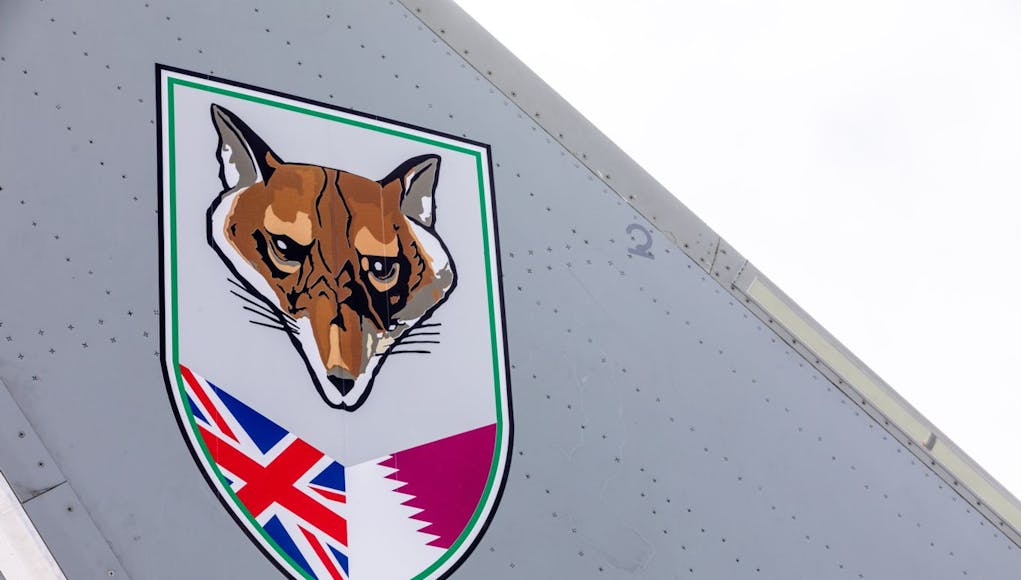
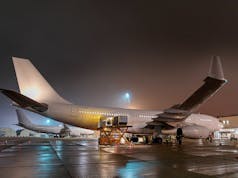

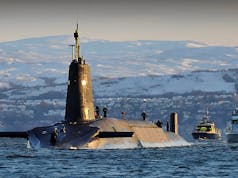
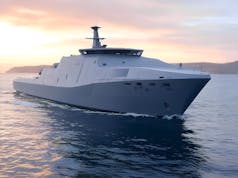
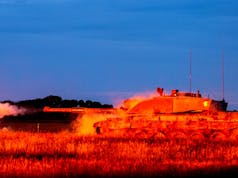

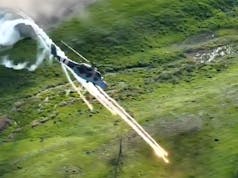


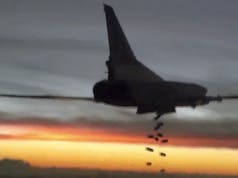

Visited there many times through work and socially when doing diving expeds.
They did manage to hack off just about every GCC country bar Kuwait a few years ago which ended up with a closed land border and reduced air and sea access. Nowadays everyone is back on speaking terms and visiting is back on.
Still going to cost you north of 20 quid for a bottle of Irish cider though! (other ciders are available at a similar price!)
Is that for a 5 litre bottle😂😂😂. Hopefully the partnerships with countries around the world continue to grow and get better. Maybe one day I will get to that part of the world.
Glad the boycott of Qatar ended and they are all getting along better now.
Persian Gulf
Arabian Gulf when living on this side of the water…
Persian Gulf, when you examine the maps of the Achaemenid period. Persian Gulf, when you look at German, French and English maps from two centuries ago. Persian gulf
Qatar did congratulate Russia a month ago on the help with regards to the world cup, Which i would have raised a few eyebrows about where they truly and really stand !!
Qatar diverted four LNG tankers to the UK away from the EU after a phone call from Borris Johnson. That is the kind of friends you want, they respect the UK contribution and they are willing to pay for it. Why we have anything to do with UAE is beyond me.
That being said Britain paying for military bases in the Gulf make no sense. Having a base on someone else’s territory only lets you defend them. Sovereign bases at Akritoni and Diego Garcia should be our focus.
With the USA pulling out of the Gulf, Europe being irrelevant and Russia proving to be Donkeys, the UK a has a real opportunity to further establish itself in the region but it should all be at a price much the way we deal with Brunei.
The UKNSF base in Bahrain was built at Bahrain’s expense. The USN isnt pulling out of the Gulf. Its retiring some legacy vessels based there but they are to be replaced by Drones and LCS …A lot of LCS!
Qatar is also investing with the UK/Rolls Royce to fund development into Small Modular Reactors.
And this and all info re the tech will be transferred for a price of course to Iran.
I don’t trust any county that has Sharia law as its national jurisprudence.
Why? This is normal. Only respect for other beliefs and religions should be mentioned in the law of that country and it should be followed.
I agree. Sadly a post western empire arrogance persists in many. The worst culprits being the US followed by Britain and France.
How about the Ottoman empire?, The Russian empire ?…nothing arrogant about their conquests then?
Study of the Ottomans will show a wide tolerance existed for all faiths. And footnote, history was made by the dead. Sadly the delusion that empire was a “good” thing still remains in many. As you prove.
Well, you just said it yourself, Ottoman empire=good, Western empires =bad. BTW how is the weather in Moscow?.
No, it is not normal for Europeans, and Islam has a long history of not respecting or other tolerating other beliefs.
A big big mistake.
Qatar is openly in connivance with Iran, terror groups such as Hezbollah and is stirring the pot in Yemen.
Its human rights record, never mind the ongoing disgusting treatment of its expat labourers is an example of taking advantage and abuse of civil rights norms.
When you mix with these countries then you are tarred with the same brush.
Ignorance by the UK of Qatar’s nasty reputation is no excuse as it is there in headlines across the world.
Well maybe we should’ve convinced the Saudis and other arabs to not blockade them should we. This is what happens when you let a partner country starve, Iran stepped up and provided assistance in terms of resources, surely policy makers should’ve seen Qatar getting increasingly closer with Iran due to that no? As a result of the blockade Turkey and Iran are now closer to Qatar and the aims of the blockade have failed. I find it equally funny you mention Qatar in regards to Yemen but isn’t our ‘ally’ Saudi Arabia doing the same?
Sure Qatar has some bad aspects but you want the economy to not suffer further, you want investments to continue; the witch hunts must stop as Qatar could easily stop investments into London and the UK.
Global policy is not black and white. It is endless shades of gray, ofcourse you could go for the lightest shade of gray but that requires a sacrifice be it economically, politically or socially. Therefore we must continue to cooperate with Qatar, or we cooperate with a country thats worse. Pick your poison.